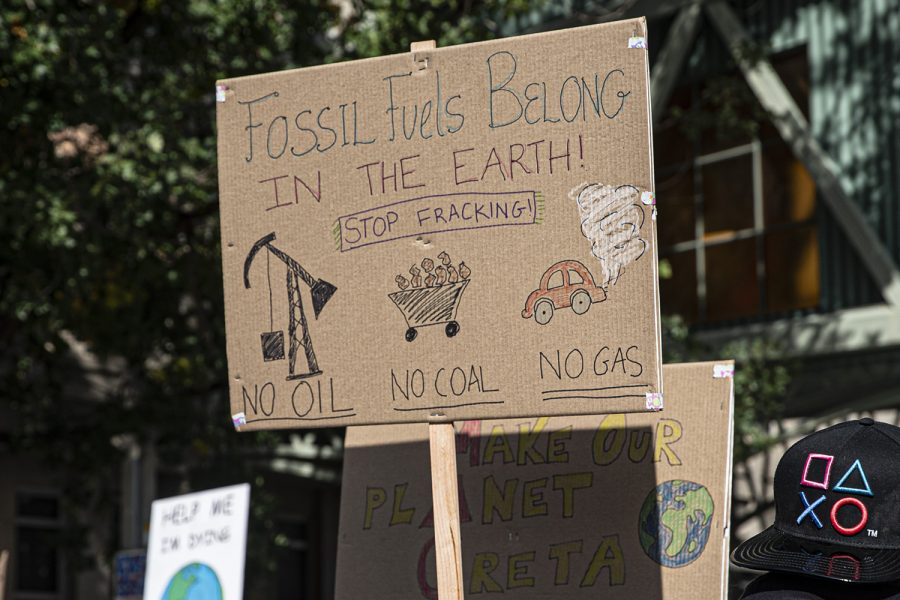Opinion: Facing extreme weather, the Midwest needs heightened climate awareness
Climate change is no longer a discussion about the future. Its effects are already happening with severe weather events becoming more frequent.
A group of protestors hold signs in downtown Iowa City while waiting for Greta Thunberg to speak on Friday, October 4th, 2019. Greta Thunberg is speaking in Iowa City as part of a local strike against climate change.
November 18, 2019
There are rallies on the Pentacrest, mobs of people traipsing through downtown Iowa City, and conversations unfolding within classroom walls — all in response to the decline of our planet’s health.
There is a shift happening — with a white-knuckled grip on policy and advocacy efforts in regards to our changing environment something must be done. But what about the devastation we’ve already seen?
This year, the Midwest has seen a surge of flooding and tornadoes, heat waves that are hotter and lasting longer, heavy rains that have amped up frequency and intensity, and the polar vortex that gripped this span of states at the beginning of the year.
It took only two days in January for 340 cold records to be set across the Midwest due to the polar vortex, with record low tied across Cedar Rapids, Moline, Illinois, and many other cities in the region.
February ushered in record snowfall — with Des Moines seeing 25.1 inches.
When the piles of snow began melting in March, there was record flooding across the Midwest. According to the Weather Channel, 42 locations across the Midwest set historic river levels.
Roads, bridges, levees, and dams crumbled, caved, or were completely destroyed because of the floodwaters. According to the National Oceanic and Atmospheric Administration, the Midwest has topped $1 billion in damage from floods and ice jams.
April began with a record-breaking, three-day snowstorm in South Dakota, and ended with the most tornado reports crammed in one day in the country. There were more than 350 reports of tornadoes across the country in a two-week span during May. The month a whole saw 556 reports — which more than tripled the 170 tornadoes seen in May 2018. And with the abundance of tornadoes, the month of May also saw the longest-lasting floods in the Midwest.
This month, predicted temperature patterns from the Weather Channel appear much below average. After a summer crowded with heat waves and heat indexes, winter will cover the Midwest with its unwavering chill.
The extreme weather we have been bracing for has already landed in our laps. We’re experiencing the shell-shocking reality of the state of the earth. And this devastation isn’t far from us — there aren’t years separating us from the effects of climate change, they’re happening now.
This weather is causing our infrastructure to crumble and our crops to suffer consistently. There are public-health risks as a result of sullied air quality and declining water quality. There is little to no aspect of our day-to-day life that remains untouched. This is an emergency that effects all of us in the Midwest and the rest of the country.
It’s important that as we talk about the future of our globe, our country, and our communities, we also consider what we’ve already experienced as a result of extreme weather — even in this last year.
Columns reflect the opinions of the authors and are not necessarily those of the Editorial Board, The Daily Iowan, or other organizations in which the author may be involved.





